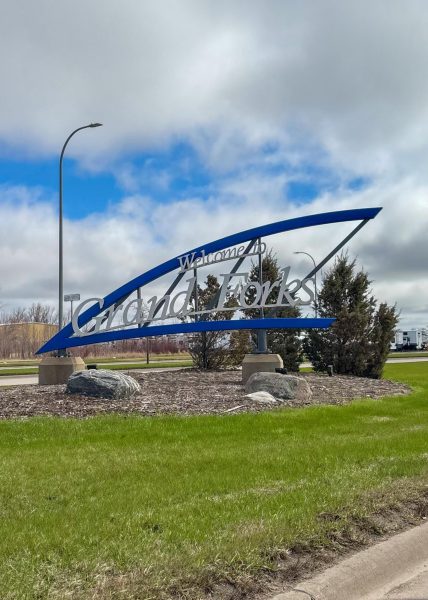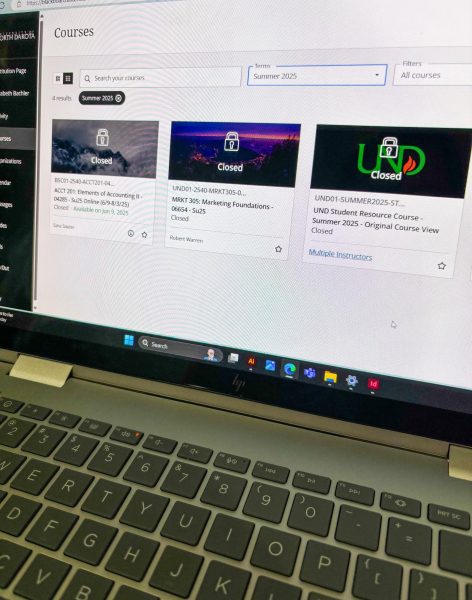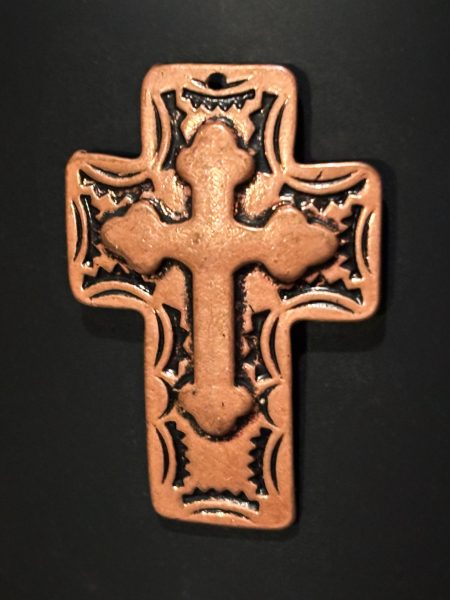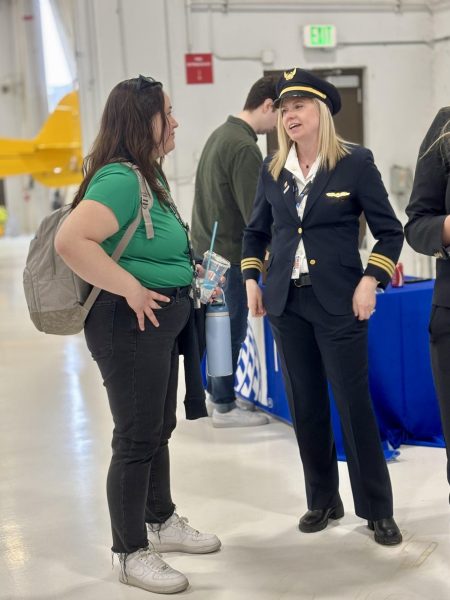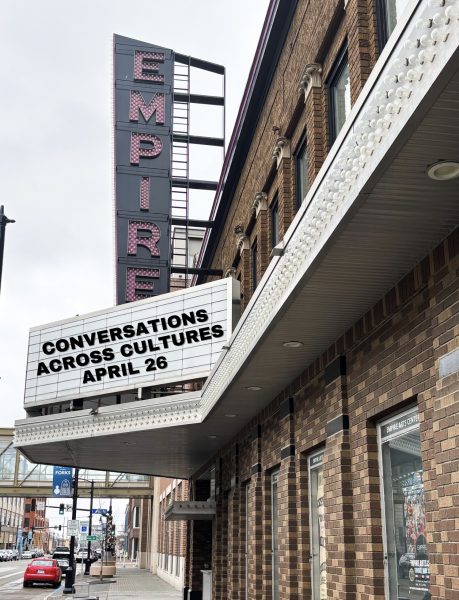Department goes digital with photo archive
Photos of western North Dakota will soon be available online in high resolution.
Leonard Hall is home to the Harlod Hamm School of Geology and Geological Engineering. Photo courtesy of engineering.und.edu.
UND is working on developing a new digital geology library full of high-resolution photos of rocks from western North Dakota. It will be accessible online to students and people all over the state.
UND’s College of Engineering and Mines and UND’s Harold Hamm School of Geology and Geological Engineering have teamed up with Texas-based company PetroArc International to create the new Continental Resources High Resolution Virtual Core Library project.
“(The photos) would make class a lot more interesting, more fun,” said UND freshman Zack Ruby, who is taking introductory geology to fulfill his Essential Studies requirements.
The library project is scheduled to take four years to complete. Funding consists of $1.5 million donated by the North Dakota Industrial Commission and $500,000 from Continental Resources, which is the largest oil rig operator in the state.
Once completed, it will be similar to UND’s already-existing Wilson Laird Core and Sample Library, located next to Leonard Hall, but users can access it online without having to travel to campus.
Some of the rock cores from the Wilson Laird Library have been selected for processing and digital imaging, while others are from western North Dakota’s Bakken region.
Each rock must be precisely sanded and polished until all blemishes are removed and it’s as shiny as a marble countertop, which can take many hours of work, depending on the rock’s composition. Some UND students have been hired by PetroArc to help with this process.
“It’s a little messier than we thought it would be,” UND Geology Department Director Joseph Hartman said. “It’s surprising how fine some of the rocks are.”
Hartman said that because of this, certain softer rocks such as salts and gypsums may end up being under-represented in the new virtual library.
After polishing is done, a digital imaging specialist from PetroArc will place the rock core in a tray and shoot a close-up photo of it using a digital camera with a macro lens, before sending the photo to their headquarters in Houston to be composited.
Future students will be able to study these high-resolution images during class lectures and labs, allowing them and their professors to tour the deep underground geology of North Dakota, without leaving the classroom. The software will allow them to manipulate digital images of rock cores and extract information from them.
“The problem with taking geology courses in the Red River Valley is that there’s not a lot of rock,” Hartman said. “Right now, we can only give observation opportunities during field trips. The Williston Basin is full of rocks but they’re all below the surface.”
Hartman is looking forward to seeing what the Virtual Core Library project will do. He says he’s enjoyed promoting it and he had fun speaking about it and presenting some of the images during a geology convention in September.
“This project is possible because people have the foresight to maintain the library as it exists, with the intent on preserving materials and keeping them in good shape,” Hartman said. “It will be really cool to see it when it’s done.”
Jaye Millspaugh is the multimedia editor of The Dakota Student. She can be reached at jaye.millspaugh.2@my.und.edu.


